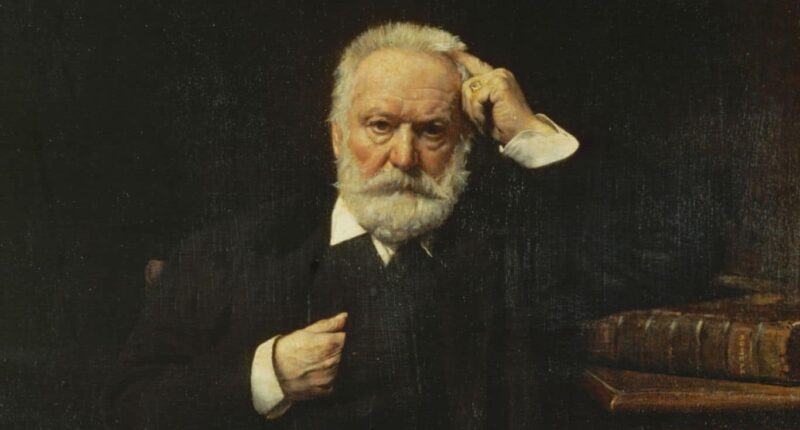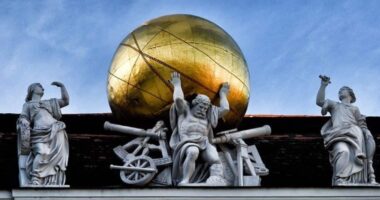Biography of Victor Hugo: French Romantic writer and politician Victor Hugo is considered one of the greatest French writers of all time. He was more than a literary figure, he was a statesman who shaped democracy and the Third Republic in France. During his lifetime, he remained a defender of equality, liberty, and fraternity, and an adamant champion of French culture.
Biography of Victor Hugo | Life and Literary Career
Early Life of Victor Hugo
Victor-Marie Hugo was born on February 26, 1802, in Besancon, Eastern France. He was the youngest son of Napoleonic army general Joseph Leopold Sigisbert Hugo and Sophie Trebuchet. The couple had two more sons, Abel Joseph and Eugene. Since Hugo’s father was in the army, the family moved often from posting to posting. In 1803, weary of the repetitive moving, Hugo’s mother Sophie separated temporarily from his father and settled in Paris with her sons.
The family reunited again in 1807, and Leopold was now the Governor of the province of Avellino. Victor was taught mathematics in this city by Giuseppe de Samuele Cagnazzi. Sophie also found out that Leopold had been maintaining a secret life with an English Englishwoman named Catharine Thomas. Hugo’s father was summoned to fight the Peninsular War. The family again moved back to Paris in 1808. They moved to an isolated mansion in a deserted quarter of the left bank of the Seine. In a chapel in the garden, Victor Fanneu de La Horie was hiding. He conspired to restore the Bourbons and was condemned to death a few years earlier. Horie became a mentor to Victor and his brothers.
Education and Personal Life

In 1811, the family reunited in Spain. Victor and his brothers went to school at Real Colegio de San Antonio de Abad, in Madrid. Sophie came back to Paris, now officially separated from Leopold. In 1812, Victor Horie was executed after getting arrested. Victor and Eugene were taken away from their mother and placed by their father in the Pension Cordier. The brother stayed in this private boarding school in Paris for three years while also attending lectures at Lycee Louis le Grand.
In 1818, Victor moved in with his mother at 18 rue des Petits-Augustins and began attending law school. He fell in love and secretly got engaged with his childhood friend Adele Foucher, against his mother’s wishes. In 1819, Victor and his brothers began publishing a periodical, Le Conservateur litteraire. Sophie died in June 1821. After a month, Leopold married his long-time mistress Catherine Thomas. Victor married Adele the following year.
Career of Victor Hugo
At the age of 20 in 1822, Hugo published his first collection of poetry Odes et poésies diverses. This earned Hugo a royal pension from Louis XVIII. In 1823, Victor Hugo published his first novel Han d’Islande, 1823. Between 1829 and 1840, he published five more volumes of poetry and built his reputation as one of the greatest lyric poets and elegiac of his time. Like other writers of his time, Hugo was hugely influenced by the prominent literary figure of Romanticism François-René de Chateaubriand. He furthered the cause of Romanticism and got into politics. Hugo was compelled into exile due to his political stances.
Hugo’s novel The Last Day of a Condemned Man expresses that the abolishment of the death penalty would later influence writers like Dickens, Camus, Dostoevsky, and Claude Gueux. He became a significant head of the Romantic literary movement with the plays Cromwell and Hernani. In 1831, Victor published one of his popular novels Notre-Dame de Paris. After this novel, Hugo decided to write a significant book on the subject of social injustice. It took about 17 years for him to write and publish his most notable work Les Misérables (1862). For his next novel Toilers of the Sea (1866), Hugo turned away from socio-political issues and wrote about a battle against a mythical creature.
However, his 1869 published work The Man Who Laughs again focuses on the social issue as he created a critical picture of the aristocracy. This novel was not as successful as his previous novels. Hugo observed it himself and comment on the developing distance between himself and his contemporaries such as Emile Zola and Gustave Flaubert. His last work Ninety-Three (1874) dealt with a topic the writer chose to avoid previously: The Reign of Terror during the French Revolution.
Drawings

In his lifetime, Victor Hugo produced more than 4,000 drawings. He started drawing as a hobby and later on, it became an important aspect of his life. Between 1848 and 1851, drawing was his exclusive creative outlet. He worked on a small scale on paper, usually in black or dark brown pen-and-ink wash, sometimes with white touches, and rarely with color. His surviving drawings foreshadow the experimental techniques of abstract expressionism and surrealism.
He would not hesitate to use his children’s ink bolts, stencils, lace impressions, puddles and stains, pliage, and grattage, often using his fingers instead of brush or pen. Sometimes he used coffee to get the effect he wanted. It is reported he would try to draw from his unconscious mind and draw with his left hand without looking at the page. This concept of the unconscious mind was later popularised by Sigmund Freud.
Hugo feared his artwork might overshadow his literary work, so he kept it away from the public eye. However, he enjoyed sharing his drawings with his friends and family in form of cards. Some of his artworks were shown to and praised by contemporary artists such as Delacroix and Van Gogh. Delacroix said if Hugo decided to be a painter instead of a writer, he would have outshone the artists of his time.
Exile
Victor Hugo decided to live in exile after Napoleon III’s coup d’etat at the end of 1851. After leaving France, Hugo moved to Brussels, then the Channel Islands, first Jersey, then the smaller island of Guernsey, where he stayed until 1870, Napoleon III’s fall from power. He lived in Guernsey from 1872 to 1873 and then returned to France for the remainder of his life. In 1871, after the death of his son Charles, Hugo took custody of his two grandchildren: Jeanne and Georges-Victor.
Last Years of Victor Hugo
Within a short period, Hugo suffered a mild stroke, his two sons died, and his daughter Adèle was interned in an insane asylum. In 1868, his wife Adèle died. Juliette Drouet, his faithful mistress died in 1833. The last phase of his political career is considered a failure. In the honor of the writer entering his 80th year, one of the greatest tributes to a living writer was held. Hugo was presented with a Sèvres vase on 25 June 1881. On 27 June, one of the largest parades in the history of French was held.
Two days before dying, he left a note with these last words: “To love is to act”. Victor Hugo’s death at the age of 83, on 22 May 1885 from pneumonia generated intense national mourning. He was awarded a state funeral by decree of President Jules Grevy. Hugo was buried at Pantheon; over two million people joined his funeral.
Also Read: 20 Best Books of Stephen King In Order (from 20th Century)



